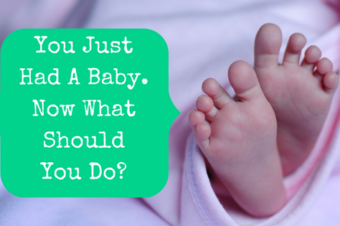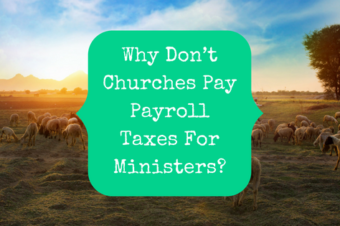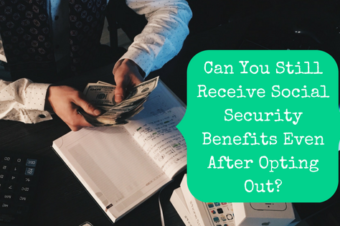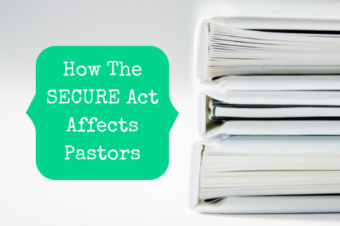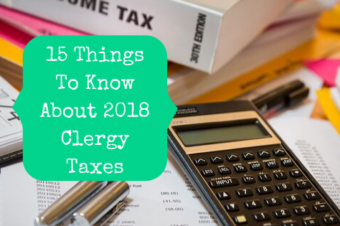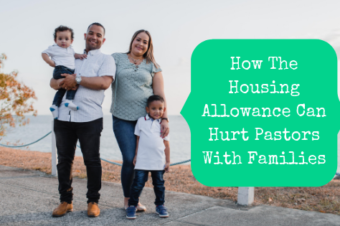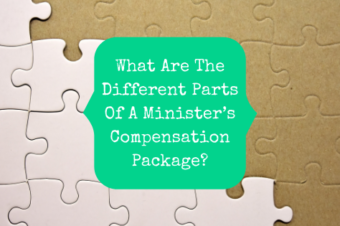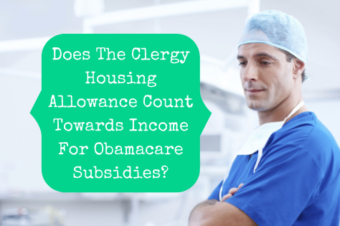Many pastors don’t have a solid understanding of how Social Security works and don’t think they need to because they have opted out. However, there are some things everyone should understand about Social Security, even pastors.
How Will A Biden Presidency Affect Taxes For Pastors?
Whether or not you believe that Joe Biden won the election, let’s set aside politics and talk about taxes. Because there’s no way I’m going to go there. I don’t care who you voted for or who you think will be president next year, today we are going to talk about Biden’s tax proposals. I should also remind you that US Presidents are not dictators and it is Congress that has to make the laws, so just because this is what Biden wants to do doesn’t mean it will actually happen.
Now that I have all of those disclaimers out of the way, let’s get to the fun part. Taxes. How does Joe Biden want to tweak the US tax code?
Changes That Might Affect You
The good news is that most of Biden’s tax increases will not affect the average American, at least directly. Of course, raising taxes on business can lead to increased prices, slower economic growth, lower wages, lower tithes, lower pay for pastors, etc. It’s all connected. However, most of the changes that would affect you directly would probably benefit you.
Child Tax Credit
The one that I think I would benefit the most from is the proposed increase in the child tax credit. Trump doubled it with the Tax Cuts & Jobs Act and Biden must have liked the response. He would like to increase it from $2,000 per child to $3,000 per child and also include a $600 bonus for children under 6. The tax credit would also be fully refundable, which would help pastors who have had their Child Tax Credit limited because of their housing allowance exemption.
Child & Dependent Care Tax Credit
Biden would also like to expand the Child and Dependent Care Tax Credit. The maximum would increase from $3,000 to $8,000 ($16,000 for multiple dependents) and the reimbursable amount would increase from 35% to 50%.
First Time Homebuyers’ Tax Credit
Another one for those earlier on in their adult lives (or pastors of any age moving out of a parsonage!) is the reinstatement of the First Time Homebuyers’ Tax Credit. This tax credit was born during the Great Recession in an attempt to combat the bursting of the housing bubble and help people buy homes, but it was only temporary. Not only does Biden want to bring it back, but he wants to increase it to $15,000. If this comes to pass, though, remember that there is no double-dipping. You can’t claim both a tax credit and a housing allowance for the same expenses!
Earned Income Tax Credit
For those on the other end of the spectrum, entering your golden years, Biden’s got something for you as well. The Earned Income Tax Credit is a reimbursable (they’ll refund you the money) tax credit for workers with low incomes. It’s the government’s way of trying to make up for the payroll taxes that lower-income earners pay. Right now, you can only claim the tax credit if you are under age 65 unless you have qualifying children. Biden’s proposal would open up the tax credit to those over age 65. I’ve heard from readers that this would definitely benefit and I’m sure they’re not the only ones.
Capital Gains Taxes
Up until this point, everything we’ve talked about would be beneficial to you. Not anymore. This one could affect your inheritance or your legacy. As you know, when you earn money, whether through work or investments, the government taxes it. When it comes to investments, you don’t pay the taxes until you sell them, even if they are growing every year.
Right now, if you have investments that have grown but you haven’t paid the taxes on them and you die, the tax liability dies with you. Your heirs do not have to pay the taxes on the growth from your lifetime. They only have to pay taxes on the gains the investment has earned since you died (the technical term is step-up in basis). Biden would like to eliminate that provision of the tax code so that heirs (or estates) would have to pay the taxes on all earnings. That means that if you receive an inheritance, some of it might end up going to the government and there would no longer be a tax benefit for you to hang on to your investments until you die.
Other Proposed Changes
There are a few other proposed changes that could affect you. He would like to expand the Obamacare premium tax credit. Biden would also like to create a refundable renter’s tax credit in an attempt to keep rent and utility payments at 30% of monthly income.
Changes To Retirement Contributions
This proposal is going to take a little bit more explanation, so I’m giving it its own section. Right now, if you make a contribution to a retirement plan that isn’t a Roth, you get a tax deduction for it. The amount of your contribution is subtracted from your income before you calculate your taxes due. That’s why it’s called a pre-tax retirement account. You don’t have to pay taxes on the money that you contribute (though you have to pay taxes when you take it out).
Biden would like to make some changes to the tax benefits of these retirement contributions that favor lower-income earners. Instead of allowing a tax deduction, he would like to have a matching refundable tax credit at a flat rate of 26%. The tax credit would be deposited into your retirement account instead of being issued directly to you.
Does that make any sense? I didn’t think so. Let’s see if an example will help.
Example
Let’s say you contribute $1,000 to a traditional IRA today. When you file your tax return, you can subtract that $1,000 from your taxable income. If you’re in the 12% tax bracket, that will save you $120 in taxes. If you’re in the 37% tax bracket, that will save you $370.
Under Biden’s plan, what would happen when you contribute that $1,000 to your traditional IRA? Instead of lowering your taxable income and therefore your tax bill, the government would make a contribution to your retirement account for you of $260 (26%). There are two things happening here. First of all, the benefit goes directly into your retirement account and not your hands, as it currently does. Second, it benefits those in lower income tax brackets more. The person in the 12% tax bracket now gets $260 instead of just saving $120. The person in the 37% tax bracket also only gets $260 instead of saving $370.
This proposal accomplishes two goals. First, it puts more money into retirement accounts, which is why the government offers these tax incentives in the first place. Second, it shifts the tax benefits more heavily towards low- and middle-income savers, which is their stated goal.
Changes For High-Income Earners
Most of Biden’s tax increases for individuals are aimed at those who earn over $400,000. If that’s you, congratulations on having a high income, and I’m sorry to say that you might have to share more of it with the government soon.
Right now, Social Security taxes are only paid on wages up to $137,700 (the cap adjusts annually with inflation). Any income above that amount is not subject to the Social Security tax of 6.2% for employees and 12.4% for self-employed individuals and pastors. (The Medicare tax, which brings a pastor’s total SECA tax to 15.3%, does not have a cap and is levied on all income.) Biden would like to reinstate that tax on income over $400,000. Under his plan, only income between $137,700 and $400,000 would escape Social Security taxation.
Biden would also like to raise the current top tax bracket. The Tax Cuts & Jobs Act lowered the top bracket from 39.6% to 37% and Biden would like to reverse that so that those with incomes over $400,000 are paying 39.6% again. It is important to remember that the Tax Cuts & Jobs Act individual tax bracket changes are temporary and due to expire after 2025. That means even if Biden makes no changes, the tax brackets will revert back to pre-Tax Cuts & Jobs Act levels for the 2026 tax year.
Other changes aimed at those who earn more than $400,000 are limiting itemized deductions and phasing out the qualified small business income deduction.
When you invest money for the long-term, you usually receive preferential tax rates on any gains that you achieve. The government does this to encourage investment and also help mitigate the diminishing purchasing power of money over time. One of Biden’s proposals is to eliminate the preferential tax rates for those earning $1 million or more.
Other Changes
Hang in there, we’re almost done here. Another Tax Cuts & Jobs Act change that Biden would like to undo is related to estate and gift taxes. Actually, he’d like to go even further back and restore those taxes and exemptions to the level they were at in 2009. This will only affect you if you have several million dollars when you die or are the beneficiary of someone that does.
Finally, Biden wants to raise taxes on businesses. I won’t go into it here, but for businesses, most of the proposed changes are not in their favor except for some select tax credits, such as those to encourage small businesses to sponsor retirement plans or bring manufacturing back to the US.
In conclusion, those are Biden’s tax proposals in a nutshell. For most of you, you’re probably happy because you mostly stand to benefit from them. I would like to issue a word of warning, though. Do you know how much money the government has spent fighting the coronavirus and the economic effects of the lockdowns this year? A lot. More than a lot. And I’m afraid we will be suffering the effects of it for years to come. Before doing a celebration dance, just remember that we will have to pay for it all one way or another, regardless of who is President.
To learn more about Biden’s proposals or help fight insomnia, read this article from the Tax Foundation.
How To Teach Your Kids About Money (No Matter Their Age)
I am officially a homeschool mom. While my kids have been home since March, I decided to officially cut ties with the local elementary school and go out on my own this fall. And I can honestly say that I have had no regrets whatsoever.
So far in third grade math, my daughter has learned how to count coins and different kinds of bills. This week, my daughter is going to be learning how to write a check. It is all very helpful (her older brother never learned to write a check in school!), but it isn’t enough. Kids learn in school the difference between a dime and a nickel, but they don’t learn what to do with them. That’s our job as parents. Some schools now offer financial classes, which you really should encourage your kids to take, but learning about compounding interest is still only a piece of personal financial management.
It would be easy if the schools would just teach our kids everything, but there are some things that must be learned at home. Like table manners. Or brushing teeth. Or money management.
Now, you may be thinking, “I can teach my kid to brush her teeth, but money management? Why can’t the schools teach that again?”
Teaching Kids About Money Is A Parent’s Responsibility
It’s scary and intimidating for most parents to think about teaching their kids about money. Money is a taboo subject in our culture, so it can be hard to talk about. And a lot of parents simply aren’t confident enough in their own money management skills.
You may need to brush up on your skills a bit (you’re in luck, you’re reading just the blog for that!), but if you really want the best for your kids, you need to teach them about money. Do you really want your kids learning about paying taxes from people like Willie Nelson (owed the IRS $16.7 million in 1990) or learning about debt from Kanye West (who a couple of years ago revealed he owed $53 million)? I sure don’t!
How To Teach Your Kids About Money
So how do you teach your kids about money? And is it too late if they’re already teenagers?
Here are three keys to teaching your kids about money. And you’re in luck! They work at any age, though the younger you start, the better.
1. Set A Good Example
We’ve all caught ourselves telling our kids not to talk with food in their mouths while we’re still chewing our last bite. But that just won’t cut it when it comes to money management. Our kids don’t really care what we say, but they watch what we do. And whether we want them to or not, they will mirror our behavior.
If you want your kids to have a strong foundation in their finances, you need to model to them how to do it. I know, it’s much easier said than done. But it’s true. The first step in teaching your kids about money is to simply show them.
2. Talk To Your Kids About Money
In our American culture, there are certain things we don’t talk about. That list is getting smaller and smaller, but it still exists. Sex lives seem to have escaped the list, but money still hasn’t. Can you believe that a 2013 study found that 63% of Americans would rather share their body weight with co-workers than their bank account balance?
That same avoidance carries over into the home as well. Many parents say they would rather discuss drugs or sex with their kids than money.
Some things can be learned by observation. Your kids can probably learn how to load a dishwasher just by watching you, though I’m sure you’ve nagged them about silverware placement once or twice. But finances aren’t very visible. The only way your kids will learn about proper money management is if you actually open your mouth and talk about it.
Many parents don’t want to worry their kids or don’t want to admit their mistakes. If you’re stressed about money, they will pick up on it whether you are open about it or not. Talking about it will probably make them feel better, even if things aren’t going well. The only way to prevent them from the same pitfalls is by talking about them. Give them the chance to learn from your mistakes so they don’t have to repeat them.
Silence about money will only cause your kids problems. Most parents don’t expect their kids to understand the dangers of drugs just because they have never seen their parents shoot up. Some things require more in-depth discussion and openness, and finances are one of them.
3. Get Your Kids Involved
Learning theory and research have consistently shown that the more active a learning experience is, the greater the learning gains and retention. How do you teach your kids about money? Let them do it!
How this plays out will differ by age. If you are buying your preschooler a toy, have him hand the money to the cashier himself. In this transaction, he will learn that he has to give up something (the money) in order to gain what he wants (the toy). He will learn that everything costs something.
If your 10-year-old has been begging you for a new video game, don’t just refer her to grandma. Have her figure out the cost of the new video game, plus tax (don’t want her to end up like Willie Nelson), and help her save up for it.
Let your teenager buy her back-to-school clothes (yes, some day they will go back to school) on her own with a set amount of money. She will either be more frugal than if you were with her or learn the hard way the value of budgeting.
Nowadays, a lot of kids are going off to college only to realize that they have no clue how to use money. Don’t let your kid be one of them. Take the time now and make a conscious effort to teach them about money. Otherwise, their bank’s overdraft fees will (we hope).
Are You Wasting Money Without A Health Savings Account?
Despite being a hot topic over the last couple of decades, the cost of health care is still a major problem for American families. Healthcare costs tripled between 2001 and 2016, and the average non-elderly family now pays $8,200, or 11% of their income, each year.
That is a national average where many people have employer-provided health insurance. Many churches cannot afford to pay as much of their pastors’ premiums or even offer health insurance at all. If you are without health insurance, it is open enrollment right now for the Affordable Care Act and you can sign up right now on the national exchange. You can also read about your other health insurance options here.
Even with insurance, most of us don’t have an extra $8,000+ just laying around for medical costs. It’s something we should be saving for on a regular basis so we can be prepared when something does come up. It can be hard to find the room in your budget to save for medical costs, but the government has provided something that makes saving towards health care costs a little bit easier and more cost-effective: Health Savings Accounts (HSAs).
What Is A Health Savings Account?
Back in 2003, the government established HSAs as a way for people covered under high-deductible health plans (HDHPs) to get special tax treatment for saving money for out-of-pocket medical expenses. By saving in an HSA, they received a tax benefit for planning ahead. As HDHPs gained in popularity, the government wanted to incentivize saving to cover the higher deductibles, so that medical events would not be financially devastating even with insurance in place.
What’s So Great About Health Savings Accounts?
There are two aspects of an HSA that make it especially attractive:
No Taxes On The Front End
First of all, you can contribute money to your HSA pre-tax. Because tax hasn’t been taken out, you end up with more to contribute. Many people have their HSA money withheld directly from their paycheck so that they never even see it or have to pay taxes on it. You don’t have to have it automatically withheld, though, you can just take a deduction when you file your taxes for the same result. Either way – save now or save later – you still save on taxes by contributing to an HSA.
No Taxes On The Back End
Not only do you save on taxes when you put money into an HSA, you save when you take it out as well. Distributions from an HSA are tax-free when used for qualified medical expenses.
This makes an HSA very unique among tax-advantaged government savings plans, like IRAs. Usually, you either contribute pre-tax but have to pay taxes on withdrawals, or you pay your taxes upfront before contributing and don’t get taxed on the withdrawals. Health Savings Accounts take the best of both kinds of plans to make a superiorly tax-advantaged savings vehicle.
Example Of Tax Savings
Let’s look at an example with real numbers. Ben and Dan each have $1,000 to save towards medical expenses. Ben saves in a regular savings account and Dan opens an HSA.
Before he can start saving, Ben has to pay his taxes, 20%, so he only has $800 to put into his account. His savings account earns him 0.1% a year. If he leaves it in there for 5 years, it will grow to an amazing $804.
Since Dan is using an HSA, he doesn’t pay taxes on his $1,000 and it all goes into the account. Because of this, even if he earns the same interest rate as Ben he’ll end up with $201 more than him, or $1,005 total. However, if he isn’t planning on using the money any time soon, he can likely earn a much better rate of return. Most HSAs offer a wide variety of investment options, from money market to stock mutual funds. And the best part is that you don’t have to pay any taxes on the interest you earn when used for qualified expenses.
Are You Eligible For A Health Savings Account?
These are the requirements to be eligible to open an HSA:
- You must be covered by an HDHP
- You cannot be enrolled in Medicare or other health coverage
- You cannot be claimed as a dependent on someone else’s tax return
HSAs cannot be joint accounts, they are individual accounts. If you are married, only one of you owns the account while the other can be an authorized user. When the account owner dies, the spouse gets to take over the account. The surviving spouse gets to use it as his or her own without paying any taxes (for qualified expenses) or penalties.
What Are The Contribution Rules?
As long as you are covered by an HDHP, anyone may make contributions to your HSA. This includes you, the account owner, your employer, any family member, or another third party, like a church or church member.
The 2020 contribution limits are $3,550 for singles and $7,100 for families, with a $1,000 catch-up contribution available to those over 55. Contributions for 2020 can be made all the way up to the tax filing deadline for the year, April 15, 2021. The limit will go up $50 for singles and $100 for families in 2021.
Once you are no longer covered by an HDHP, you can’t make anymore contributions. You can still use the funds in the account for eligible expenses, though.
What Can You Spend The Money On?
HSA money can be used for many things that aren’t usually covered by health insurance plans. A few examples are deductibles, co-insurance, prescriptions, dental care and vision care. Most things that would typically qualify for the medical expense deduction on your tax return qualify for an HSA.
For people over 65, qualified expenses include:
- Premiums for Medicare parts A, B, D and Medicare HMA
- The portion an employee pays for employer-sponsored health insurance
- The employee portion of employer-sponsored retiree health insurance
Supplemental policies like Medigap are not IRS qualified expenses.
It’s Not A Use-It-Or-Lose-It Account
It’s easy to confuse HSAs with FSAs (Flexible Savings Accounts) and all of the other acronyms the government uses. If you’re familiar with an FSA, you know that any unused funds in excess of $500 are forfeited at the end of the year.
Luckily, HSAs are different. Account balances simply roll over from year to year, allowing for incredible growth and accumulation of savings. As long as you are eligible, you can continue to contribute to your account tax-free and let the money grow tax-free for use at any time in the future, whether near or distant.
How Do I Open A Health Savings Account?
Now that you’ve seen how great they are, how do you get one? It’s as easy as opening a bank account, once you’ve chosen who you want to open it with. Just fill out the application and start depositing.
You can start HSAs with banks, brokers, credit unions and insurance companies. If you just Google “Open HSA,” you’ll see plenty of good options. Here is a good article with tips for choosing an HSA custodian, and this blog post lists some of the most popular ones along with their fees and investment options.
Good luck and happy savings!
Does The Clergy Housing Allowance Count Towards Income For The Premium Tax Credit?
A big part of the Affordable Care Act, or Obamacare, legislation was the creation of the Marketplace where people without access to a workplace health insurance plan could shop for and purchase an individual policy. This was good news for many independent pastors because a lot of small churches simply cannot afford to offer health care benefits.
How Obamacare Subsidies Work
Not only did Obamacare create the Marketplace but it also created government subsidies, or tax credits, to help people pay their premiums. Subsidy eligibility is based on income, beginning at 400% of the federal poverty level. For example, the federal poverty level for a family of 4 is $26,200 so if a 4-person family’s income is $104,800 or less, they should be eligible for a subsidy. Those at or below the poverty level are usually eligible for Medicaid instead of subsidies. Click on the link above to see the federal poverty level based on household size.
The subsidy is based on income during the year of coverage, so if you sign up for 2021 coverage today, you will need to estimate your 2021 income for them to calculate your subsidy. If you overestimate, you will have to pay back the excess at the end of the year. If you underestimate, then you could get additional tax credits at the end of the year.
How The Pastor’s Housing Allowance Affects Income
When it comes to income-based programs, pastors always have the same question: Does my housing allowance count as income? That’s a really good question to ask because the answer varies by program. For some things it does and for some things, it doesn’t. You can read all about that in my book about the housing allowance.
When it comes to the Premium Tax Credit, the official name for the Obamacare subsidy, the housing allowance DOES NOT count as income. This is the way that they calculate income:
Adjusted Gross Income (AGI)
+Non-Taxable Social Security Benefits
+Tax-Exempt Interest
+Excluded Foreign Income
=Modified Adjusted Gross Income (MAGI)
Your AGI comes from your tax return, Form 1040, and does not include the housing allowance. Neither is it added back in, like excluded foreign income, tax-exempt interest, and non-taxable Social Security benefits. This is the same calculation that they use when computing income for Medicaid and the Children’s Health Insurance Program (CHIP) as well.
Obamacare Open Enrollment Is Now
Open enrollment for 2021, when you can sign up for a new Marketplace plan, began yesterday and goes until December 15. So, if you need health insurance now is the time to get it. If you want to learn more about your options beyond the Obamacare Marketplace, read this article.



